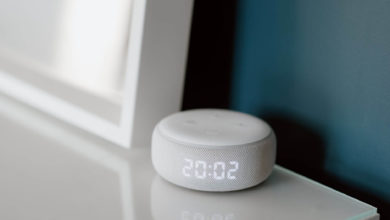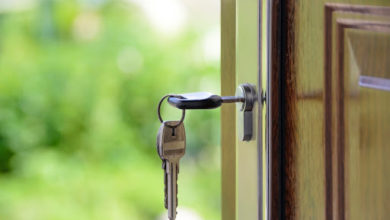How Security Cameras are Gaining Popularity Day by Day
KEY TAKEAWAYS
It used to be the case that a high-quality security camera system would set you back thousands of dollars. Seeing video surveillance systems outside of corporate offices or government buildings was a rarity, much less those installed on residential homes.
But with the advance of security camera technology, and a greater demand from law enforcement agencies and homeowners interested in personal security, this trend is fast-changing.
Today, video surveillance equipment is more readily available, much cheaper to install, and one of the best ways to secure property from would-be intruders and other criminals. That’s one reason why the total number of installed video surveillance cameras worldwide is approaching 1 billion.
We’ll explore this trend in more detail below, highlighting statistics that show just how much traction this technology has gained in recent years.
Security Cameras Nearing 1 Billion Worldwide
The Bureau of Labor Statistics (BLS) has highlighted how in the three years from 2015 to 2018, the number of installed surveillance systems in the US increased from 47 million to 70 million. By 2021, this number was predicted to reach 85 million. While updated statistics are not readily available, we are edging closer to having 1 billion cameras monitoring the world’s population.
While statistics point to China having the greatest number of cameras per citizen, the United States follows closely behind. Recent research from Comparitech has found that:
§ Atlanta is the most-surveilled city, having a ratio of almost 50 cameras for every 1,000 residents
§ Conversely, Chicago has the highest number of security cameras installed, at around 32,000
§ 28 police departments within the country’s 50 most-populated cities have access to Ring doorbell footage
What’s fueling this exponential increase in video surveillance and the use of security cameras for both businesses and private residences? As we will explore below, numerous research and case studies have pointed to a reduction in overall crime rates in areas where video surveillance has been installed.
Security Cameras Lead to a Decrease in Crime Rate
In recent years, some of the greatest benefits of security cameras have been seen by law enforcement agencies, as a means of both deterring and catching criminals. One recent study, which was published in the ‘Security’ journal, found that in the United States, installing video surveillance systems in public spaces was associated with an overall reduction in crime rates.
This study analyzed crime data from more than 2,000 cities in the US, between 1990 to 2021. There was a direct correction between the installation of video surveillance systems and decreases in crime rates. What’s more, this benefit was seen in both commercial and residential properties, as well as for both violent and property crimes.
Reported violent crime rate in the United States from 1990 to 2021 ; Source – Statista
These findings could have important implications for policymakers as they consider ways to reduce crime rates. Crucially, they also highlight the importance of business owners and homeowners using security cameras to protect themselves and their properties.
Other Evidence in Support of Video Surveillance to Reduce Crime Rate
Findings from the above study are important, but they’re far from being the first instance in which this technology has proven itself when it comes to reducing crime rate or the fear of crime:
§ A report from Arizona State University’s Center for Problem-Oriented Policing concluded that CCTV systems could have numerous benefits, including reducing the fear of crime, aiding in police investigations, and information gathering.
§ In the United Kingdom, The College of Policing’s Crime Reduction Toolkit talks about security cameras being “associated with a statistically significant decrease in crime.” In one case study, there was a 13% reduction in areas monitored by CCTV. In the same study, crime was reduced by 37% in car parking lots that were monitored by cameras.
§ Another study linked surveillance cameras to a decrease in 575 crimes annually. Interestingly, many of these crimes were simply displaced to nearby areas without CCTV monitoring, highlighting a need for greater coverage.
§ A 2019 study found that security cameras were even more effective at reducing crime when they were monitored by private security personnel. Fortunately, mobile and wireless cameras mean business owners and property owners can fulfil this role themselves.
Even in instances where cameras do not deter a criminal, they prove instrumental in ensuring that offenders are brought to justice.
For example, in the United Kingdom, in 2009, when cameras were less widespread, it was reported that CCTV solved just 1 in 1000 crimes. In more recent years, much like the rest of the world, the UK has installed thousands more video surveillance systems. In 2017, a study highlighted how CCTV footage was available for almost half of 111,000 offences and proved useful in 65% of those criminal cases. This is just one example:
§ In the United Kingdom, CCTV played a pivotal role in identifying the offender in a high-profile murder case that involved a former policeman.
§ In the Boston Marathon bombing, CCTV footage from an estimated 200 businesses was used in identifying the men responsible.
There are numerous other instances of security cameras helping to solve cases that may otherwise have gone unsolved. So, while the increasing number of security cameras may occasionally feel unsettling, it’s clear that the advance of this technology is doing greater good for society.
A Note on Video Surveillance and Data Privacy
In countries where the European General Data Protection Regulation (GDPR) applies, data privacy is already a growing concern. Anyone storing video footage captured outside of their own property must comply with GDPR law.
While GDPR generally doesn’t affect US companies and organizations, states are increasingly focusing on data privacy. California, Connecticut, Colorado, and Virginia are just a handful of the states that have recently implemented comprehensive data privacy laws, and video footage may well fall under the remit of such laws in future.
Of course, businesses shouldn’t be put off from the idea of using video surveillance simply due to data privacy. Having a comprehensive security camera system can reduce your risk of fraud, theft and vandalism, liability for injury, and more. Therefore it’s crucial to seek professional video surveillance installations for your business from an experienced supplier in the States.
In Conclusion
The continuous evolution of security camera technology is a welcome development in enhancing the safety of our homes and streets, ultimately aiding in the apprehension of criminals. Security cameras can help keep your kids and pets safe at home given their ever-expanding capabilities.
Statista predicts that the surveillance technology market size will grow from around $130.8 billion in 2022 to around $213.16 billion by 2026, a near three-times increase since 2020. Given that we are already nearing 1 billion security cameras worldwide, this technology shows no signs of slowing down and will continue to offer increasingly innovative solutions to both people looking to protect their property, and law enforcement agencies who work to make our streets safer.
While we’re likely to see a number of innovations in the coming years, one of the most recent advancements is in the ability to remotely monitor CCTV footage without remaining tethered to a desk, something that brings about benefits both in terms of convenience and reducing expenditure on staffed systems. Video surveillance systems like Mobile Video Guard could be the next natural step for law enforcement officials who want to expand their capabilities.




